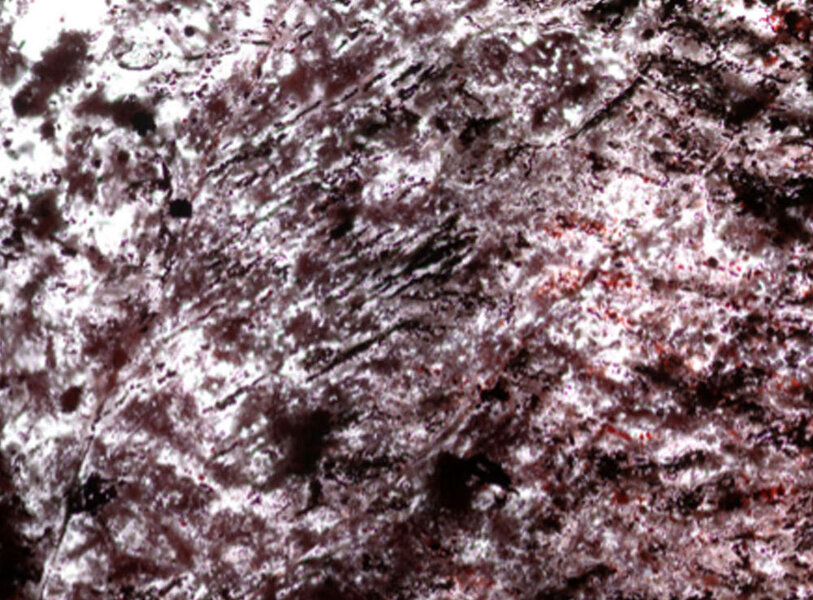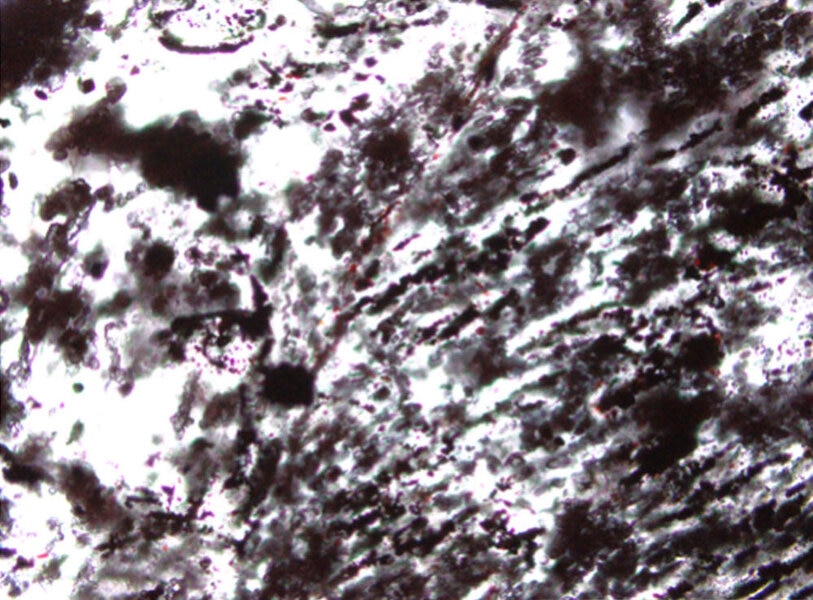Create a free profile to get unlimited access to exclusive videos, sweepstakes, and more!
Life-forms on Earth probably emerged way earlier than we thought
Like, 300 million years earlier.

Ever wonder what the first life-forms to spawn on Earth looked like? If you’re thinking of something kind of like the creature in The Thing, it might not all be in your imagination.
Whatever that alien parasite which terrorized Kurt Russell actually was, there might have been a microscopic version of that creeping around the primordial ooze of our nascent planet. Microbes emerged on this planet billions of years ago. Now a bizarre fossil whose origins are thought to possibly be biological could rewind the genesis of life on this planet back to at least 3.75 and up to 4.28 billion years ago — up to 300 million years earlier than what was previously assumed — that is, if it is proven to have once been alive.
Many structures have been almost convincing enough to pass as bacteria from the dawn of life. Until now, they were found to have formed from abiotic processes, but researcher Dominic Papineau of University College, London, saw an anomaly. Like the thing in The Thing (inspired by Lovecraftian terrors), it had branches and filaments that sort of appeared like tentacles. Further analysis revealed its origins are probably biological. Nothing like this ever formed only from chemical reactions. Papineau led a study recently published in Science Advances.
“We confirmed the branching structures of the fossil were different from those made by abiotic processes, because none of the known ones make pectinate-branching structures of branched filaments with twists and inside tubes,” he told SYFY WIRE.
The potential microbe in question has a stem that branches with parallel “tentacles” out on one side. In a piece of rock that was once part of an ancient seafloor in what is now Quebec, it stood out among hundreds of distorted ellipsoid structures, which are possibly abiological in origin. There have been many chemical structures with an ellipsoid morphology found before. Many structures mistaken for bacteria have been created through metamorphism, the process by which rock is heated and compressed to change into another form of rock over eons.
To observe the tentacles up close, which were made of hematite covered in quartz, Papineau and his team sliced the rock into extremely thin sections that exposed larger hematite structures that could not be seen from the outside. Hematite is an iron oxide. Bacteria that eat rocks do exist, and the mysterious structure was compared to iron-oxidizing species that lurk near hydrothermal vents at the bottom of the ocean. Younger fossils known to be microbes were also compared to the specimen. After seeing it under light-scattering microscopes and through hi-res imaging techniques, they were able to reconstruct a 3D model that almost seemed alive.
“Aspects of this structure similar to iron-oxidizing bacteria include filaments, long twists, short twists, tubes, branches, pectinate branches, terminal knobs and hematite composition, as well as petrographic context, and geological context,” Papineau said.
In the rock, the researchers also found mineralized chemical byproducts that might suggest an ancient microbe that metabolized iron and sulfur. The morphology of the unnamed thing’s filaments gave away the presence of iron, while chalcopyrite crystals in the rock also contained iron, along with copper and sulfur. There is a possibility of this proto-microbe, if it was a microbe, to not have needed oxygen and been capable of a sort of anaerobic photosynthesis.
Something especially interesting about hematite is that photosynthesis by early cyanobacteria, which is thought to have pumped Earth’s oceans full of oxygen, most likely formed hematite. There were massive amounts of free iron floating around in the oceans before that. When the oxygen released by those bacteria reacted with that iron, it formed chunks of hematite that sank and later became rock formations like the Nuvvuagittuq Supracrustal Belt (NSB) in Quebec where the possible microbe was found. Could it have been one of these cyanobacteria? Extant cyanobacteria are round with no tentacles, but anything is imaginable.
This find could even mean that Earth was swarming with diverse microbial life-forms around 4 billion years ago. Whether or not those strange ellipsoids were biological or not is still unknown, but whether or not they were, Papineau saw similarities between them and the marine bacteria Chromatium okenii. Fossils that might be evidence of the oldest life on Earth may also give an assist to the search for life beyond Earth. Maybe there is a planet out there on which life is just starting to emerge, and that extraterrestrial life looks eerily close to this.
“The more we document those and learn from our findings, the better prepared we will be for Mars sample return and specifically with the types of biosignatures to seek on other planets and the kinds of analytical techniques to use to find them,” Papineau said.
Maybe Lovecraft was right, and the first things to populate Earth really did have tentacles.




























